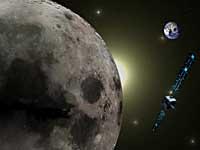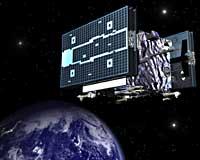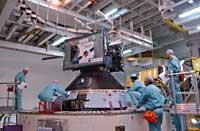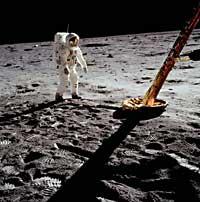Smart 1: Europe looks at the Moon

Smart 1 is the first probe sent to the Moon by the European Space Agency (ESA). The aim of this mission is to obtain data that will allow us to better know the Moon and, above all, to test tools. In fact, the devices designed for use in space are tested first on Earth, in the same conditions as in space as much as possible, but it is essential to check in situ the suitability of the design.
And so far the team they have tested seems to be doing very well. Especially proud of propulsion. Smart 1 uses the propulsion per ion. And they say that ionic propulsion will be more effective than chemical fuel propulsion in the future. For this it will be necessary a long way, since the ionic propulsion is in the first steps.
This probe carries xenon of propulsion. Through solar panels, xenon is ionized and those ions are precisely those that are expelled from the probe through a magnetic field, which are those that promote the advancement of the probe.
Economic and effective mission
Smart 1 is, however, a cheap mission. Space agencies have expensive and important missions on the one hand, but on the other, minor missions
e
They tend to have. And Smart 1 is one of those small missions. Its name indicates: Smart is the acronym for Small Missions for Advanced Research Technology, small missions to advanced research technology.
Imagine that the NASA Apollos came to the Moon 35 years ago in four days, while the Smart 1 took thirteen months. Great difference in terms of time spent on the trip, but probably the biggest difference is in the budget. However, Smart 1 has reached the orbit of the Moon two months before what they expected, and in ESA they are satisfied with this advance by saving fuel.
The mission is small and no probe is very big: It weighs 370 kilos and is cubic. The sides of this cube measure around a meter, making it approximately the size of a household washing machine. Through this cube, two fourteen metre long solar panels, like wings, are extended.
For its launch, logically, the solar panels were packaged, folded, and when they were off Earth it opened the panels in south form. The probe was launched by a pitcher Ariane 5, on 27 September last year, at the Kuru space base in French Guyana.
A station on the Moon?
For many experts, the main goal of Smart 1 is to take the first steps in implementing a stable space station on the Moon. In fact, the probe will analyze the surface of the Moon and look for the most suitable areas to locate the station.

The idea of building a station on the Moon is not today in the morning. This theme had a lot of strength in the Apollo missions after the trips to the Moon. But the difficulties were evident: they did not know how the body of astronauts would respond in those conditions, and the displacements had to be constant to provide the necessary topics. The first space station (Sayut 1) was built by the Soviets in 1971, followed by the rest of Sayuts, the Anden Skylab, the famous Soviet Mir and the current International Space Station. After this journey, it can be affirmed that technology has been advanced enough to build a station on the Moon.
But there is one thing that has not yet been clarified and that is very interesting for that season to be useful: water, or rather ice. It is important to know where and with what precision is the ice on the Moon, thus avoiding the supply from the Earth. And one of the objectives of Smart 1 is precisely that: Study of the poles of the Moon in search of ice.
However, ESA is not the only space agency that has programmed missions to the Moon. After a decade of abandonment, he again became interested in space agencies around the world. China, Japan and the US, for example, plan to place probes in the orbit of the Moon. And then, the Rover will be weighted to perform the studies in situ, as is being done on Mars.

In this way, it should be thought that in a few years large structures will be built on the Moon so that the human being can make stays of several months, as it is now done in the international station.
In addition to searching for ice, Smart 1 will analyze the components of the Moon. With the knowledge of these components it is intended to know the origin of the Moon, and what was the relationship between the Moon and the Earth, since there are currently several theories.
As you see, it is quite a big job, although it has been called ‘small mission’. The elegant Smart 1 will help us to know better what has been called the sister of the Earth, Mrs. Ilargi.
Published in 7K.
Buletina
Bidali zure helbide elektronikoa eta jaso asteroko buletina zure sarrera-ontzian











